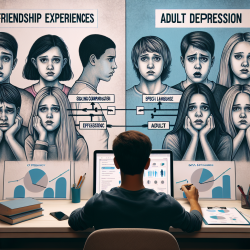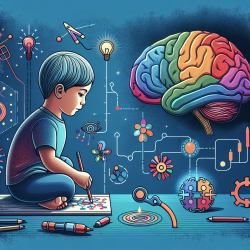Understanding the Impact of Adolescent Peer Dysfunction on Adult Depression
In the ever-evolving field of child and adolescent development, understanding the long-term impacts of adolescent experiences is crucial. A recent study titled Prospectively Predicting Adult Depressive Symptoms from Adolescent Peer Dysfunction: a Sibling Comparison Study sheds light on the significant role that peer dysfunction during adolescence plays in predicting depressive symptoms in adulthood.
Key Findings from the Study
The study utilized a sibling comparison design to explore whether adolescent peer dysfunction could predict adult depression, even after accounting for familial and individual confounding factors. The findings revealed that self-reported peer dysfunction in adolescence is a significant predictor of depressive symptoms in adulthood, independent of family-level confounders and other individual characteristics.
Key insights from the study include:
- Self-reported adolescent peer dysfunction was strongly associated with adult depressive symptoms, even after controlling for familial confounders.
- Parent-reported peer dysfunction showed a weaker association, suggesting that adolescents' perceptions of their peer relationships are crucial.
- The study highlights the importance of addressing peer dysfunction in adolescence as a preventative measure against future depression.
Implications for Practitioners
For practitioners working in schools or providing online therapy services, these findings underscore the importance of early intervention in cases of peer dysfunction. By identifying adolescents who struggle with peer relationships, practitioners can implement targeted interventions to mitigate the risk of developing depression later in life.
Here are some actionable steps practitioners can take:
- Conduct regular assessments of peer relationships among adolescents to identify those at risk.
- Develop and implement intervention programs focused on enhancing social skills and peer interactions.
- Educate parents and teachers about the signs of peer dysfunction and its long-term implications.
Encouraging Further Research
While this study provides valuable insights, it also opens the door for further research. Future studies could explore the specific dimensions of peer dysfunction that most strongly predict depression and investigate the role of genetic factors in more detail. Such research could refine intervention strategies and improve outcomes for at-risk adolescents.
To read the original research paper, please follow this link: Prospectively Predicting Adult Depressive Symptoms from Adolescent Peer Dysfunction: a Sibling Comparison Study.










